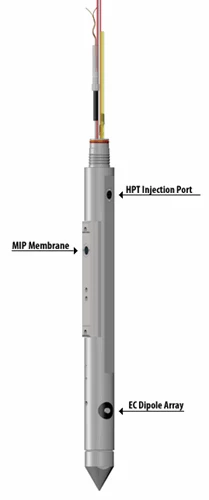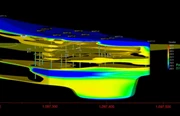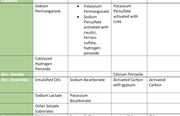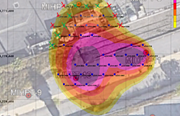Membrane Interface Hydraulic Profiling (MIHPT)

Rapid screening tools reduce investigation time and save money by quickly identifying areas of the site for further investigation with more costly definitive technologies. The MIHPT allows for rapid reconnaissance of sites to zero in on source areas and plume cores while identifying both transport zones and contaminant mass storage zones.
The MIHPT system combines the rapid volatile organic compound (VOC) screening of the MIP system with the injection logging of the hydraulic profiling tool (HPT) in a single tool run. Collecting these data sets in a single boring provides a more complete picture of subsurface conditions. Because this tool provides high resolution relative data regarding the spatial locations of relatively high and low VOC accumulations in relation to hydrostratigraphy, as defined by both electrical conductivity and hydraulic conductivity, the MIHPT system is an ideal tool for zeroing in on source zones prior to implementing the more costly definitive methods required for a complete assessment.
The MIP is a high-resolution tool that produces qualitative vertical profiles of detector responses to VOCs as well as the hydrostratigraphy. MIP explorations are advanced to develop visual representations of site contamination, typically presented as profile plots (1-dimensional), transects (2-dimensional), and fully 3D interpolated visualizations and interactive maps. MIHPT provides real-time information to allow users the ability to make time-sensitive decisions in the field as part of a dynamic work strategy. This type of approach saves both time and money over conventional approaches.
The MIP heats the soil and groundwater adjacent to the probe to 120°C to volatile VOCs in contact with the Teflon membrane on the outer surface of the tip. The volatilized VOCs move across the membrane in response to a pressure gradient established by heating the subsurface. Diffusion in response to a concentration gradient between the formation and the inside of the tool may also play a role. Behind the membrane is a closed, inert gas (typically nitrogen) loop that carries the vapors to a series of detectors housed at the surface. The detectors we commonly employ are:
- Electron Capture (ECD) Very sensitive to chlorine bonds but with a short linear range.
- Halogen Specific (XSD) Focused on chlorinated, fluorinated or brominated compounds. Less sensitive than the ECD but with a higher top end and a longer linear range.
- Photoionization (PID) A general all-around detector that responds to aromatic compounds (as in petroleum distillates) as well as “seeing” higher concentrations of chlorinated ethenes, etc.
- Flame Ionization (FID) Responds to many of the same compounds as the PID but also responds to methane.
Each detector produces an electrical signal in uVolts that are plotted as a continuous profile (plotted with respect to depth) to indicate the relative distribution of VOCs.
One of the key parameters necessary for the development of a Conceptual Site Model that is adequate for making sound site management decisions is the distribution of hydraulic conductivity. The HPT is designed to evaluate the hydraulic behavior of unconsolidated materials by injecting clean water into the subsurface and recording changes is the associated pressure. The HPT system records these changes in pressure and can be used to estimate hydraulic conductivity values. Both the pressure and the estimated hydraulic conductivity are plotted in vertical profiles with respect to depth along with the detector responses.
The HPT operates by injecting water into the subsurface at a specific flow rate (usually less than 300 mL/min). The injection pressure provides an indication of the hydraulic properties of the soil. A relatively low-pressure response indicates a relatively high hydraulic conductivity; conversely, a relatively high-pressure response indicates a relatively low hydraulic conductivity. During post boring processing, the changes in pressure and flow are utilized to estimate hydraulic conductivity. Additionally, an electrical conductivity dipole is integrated into the HPT probe as electrical conductivity can sometimes be useful in interpreting particle size distributions of unconsolidated deposits.










